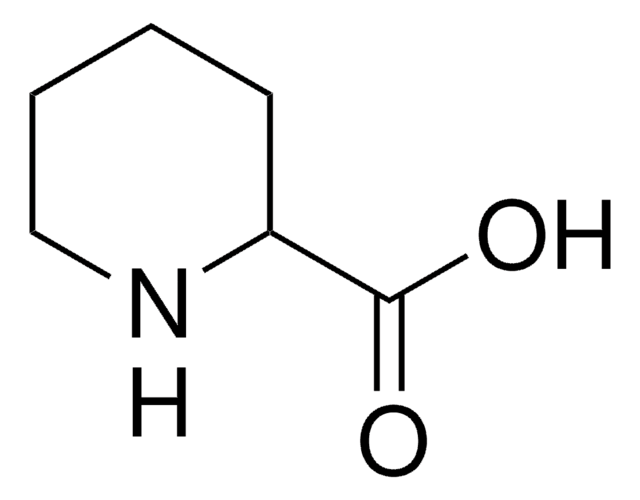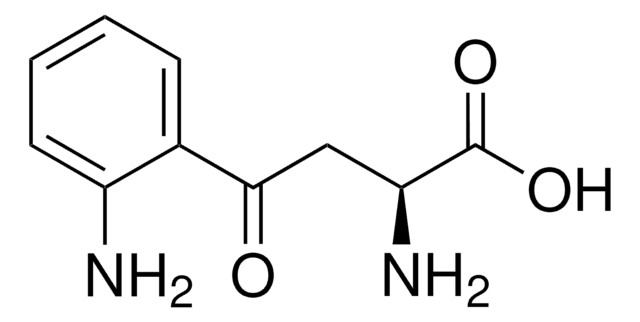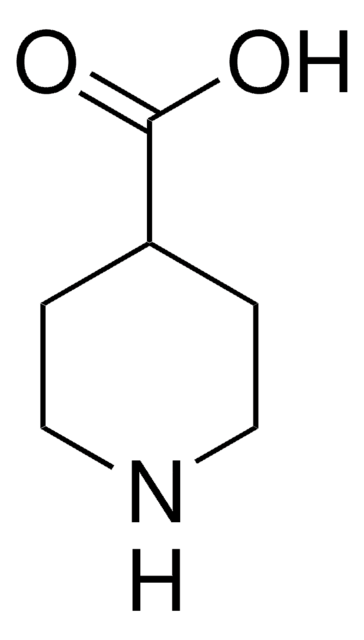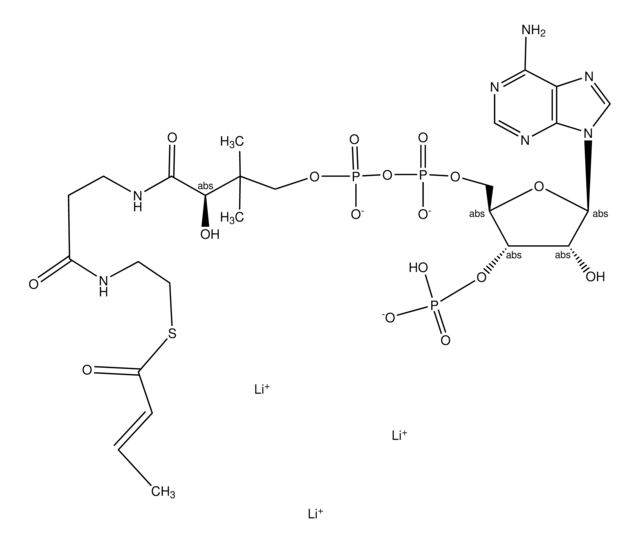P2519
L-Pipecolic acid
99% (titration), suitable for GC/MS
Sinonimo/i:
(S)-(−)-2-Piperidinecarboxylic acid, L-Homoproline
About This Item
Prodotti consigliati
Nome del prodotto
L-Pipecolic acid, 99% (titration)
Livello qualitativo
Saggio
99% (titration)
Stato
powder
tecniche
GC/MS: suitable
Colore
white
Punto di fusione
272 °C (lit.)
Stringa SMILE
OC(=O)[C@@H]1CCCCN1
InChI
1S/C6H11NO2/c8-6(9)5-3-1-2-4-7-5/h5,7H,1-4H2,(H,8,9)/t5-/m0/s1
HXEACLLIILLPRG-YFKPBYRVSA-N
Cerchi prodotti simili? Visita Guida al confronto tra prodotti
Descrizione generale
Applicazioni
Azioni biochim/fisiol
Avvertenze
Warning
Indicazioni di pericolo
Consigli di prudenza
Classi di pericolo
Eye Irrit. 2 - Skin Irrit. 2 - STOT SE 3
Organi bersaglio
Respiratory system
Codice della classe di stoccaggio
11 - Combustible Solids
Classe di pericolosità dell'acqua (WGK)
WGK 3
Dispositivi di protezione individuale
dust mask type N95 (US), Eyeshields, Gloves
Scegli una delle versioni più recenti:
Possiedi già questo prodotto?
I documenti relativi ai prodotti acquistati recentemente sono disponibili nell’Archivio dei documenti.
Il team dei nostri ricercatori vanta grande esperienza in tutte le aree della ricerca quali Life Science, scienza dei materiali, sintesi chimica, cromatografia, discipline analitiche, ecc..
Contatta l'Assistenza Tecnica.








